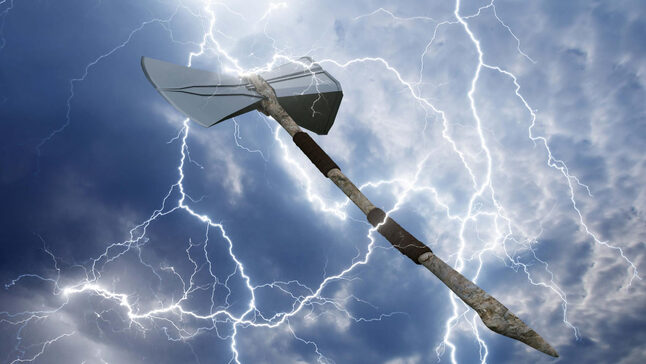Lightning strikes are the most frequent cause of major accidents triggered by natural events.
Did you know?
- Lightning damage is incurred by immediate ignition, electrical and electronic systems failure, or structural damage.
- The impact of lightning strikes implies a risk for workers, storing flammable material or electronic equipment, which could also be damaged by surges caused by electric discharge.
- Toxic releases and tank fires are the most common scenarios associated with lightning strikes.
- Oil, diesel, and gasoline are the substances most frequently released during lightning-triggered accidents.
- Direct lightning strikes can severely damage structures due to thermal heating.
Lightning can interact with an industrial structure either by direct strike, indirect lightning currents that induce secondary sparks, or by the disruption of control systems and electrical circuitry. If flammable vapors are present, immediate ignition can occur.
How does lightning damage commercial property?
The air through which lightning strikes can reach temperatures as high as 50,000 Fahrenheit, or five times higher than the sun's surface! A lightning bolt not only causes fires, but it can also damage exposed equipment on your rooftop or on your exterior work area and inside your facility. Lightning can send electricity through plumbing pipes, electrical wires (e.g., a landline telephone), and metal reinforcement in concrete flooring and walls.
For example, in petrochemical facilities, lightning can cause explosions and/or ignite fires that consume millions of dollars of product, create prolonged downtime, demand environmental clean-up, incur regulatory fines, and cause destruction of equipment-- requiring excessive repair or replacement, and impacts entire communities. The repercussions can be exorbitant financially for these companies.
We consider four factors while assessing the threat of lightning damage to a plant or facility:
- Frequency and severity of lightning storms
- Vulnerability of existing and proposed instrumentation
- Exposure of systems wiring to possible lightning strikes
- Potential harmful impact of instrument failure on the process
Lightning Eliminators and Consultants, Inc. has revolutionized lightning protection technology. We provide innovative and patented products and services working in line with charge transfer technology. Simply put, LEC’s technology deters the electrically charged clouds from striking, thus eliminating the risk of lightning damage.


